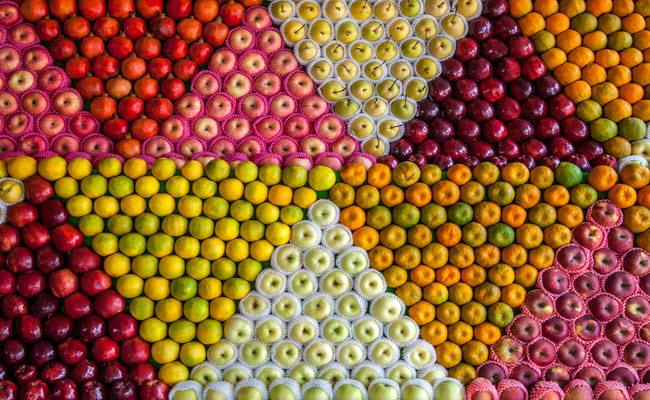We tend to believe that the fruit and the vegetables we eat today are "natural" and the same as they always were. It turns out that in the past this familiar food didn't look like this at all. Its genetics was modified over time by humans, we did this for centuries.
This process is called selective breeding and it consists of a slow procedure whereby farmers select crops with certain traits, causing the disappearance of previous species. An article published by Business Insider shows evidence of this phenomenon.
WILD WATERMELON MODERN WATERMELON

In the 17th-century, still life painter Giovanni Stanchi depicted a watermelon which is strikingly different from the one we're used to see today. Humans have modified this fruit to be easily edible and with more flesh. The red interior is actually the placenta of the fruit, and it only represented a small part of the fruit in the beginning. Some could say that the watermelons in Stanchi's painting are only unripe or unwatered, but the presence of the black seeds proves the contrary.
WILD BANANA MODERN BANANA

It seems that the wild bananas were cultivated at least 7,000 years ago in Papua New Guinea and Southeast Asia. The modern banana is a result of a mix of two different varieties, Musa acuminata and Musa balbisiana (in the picture). The banana we know today has smaller seeds, it is packed with nutrients and is very handy to consume.
WILD CARROT MODERN CARROT

The first carrots were first seen in Persia and Asia Minor in the 10th century. Their color was originally purple or white, and they were attached to a thin root. The purple pigment was lost and it changed to a more yellowish color overtime. Thanks to breeding the carrots we eat today are much larger, tastier and orange.
WILD CORN MODERN CORN

Corn comes from North America and we have evidence of it in 7,000 BC. It was dry like a raw potato, and it represents one of the best examples of selective breeding. The corn we eat today is much larger (1,000 times) and much easier to grow and consume. The changes are attributed to European settlers in the 15th century who started cultivating corn.
WILD PEACH MODERN PEACH

Peaches went through a dramatic change. Around 4,000 they existed in China and used to taste earthy and slightly salty. They were much smaller, cherry-like fruit with very little flesh. Today they are 64 times larger, 27% juicier, and 4% sweeter than the original ones.
Humans have been breeding and modifying their surrounding, trying to adapt it to their benefits. The topic of GMOs generates strong reactions today, but we have been tweaking the genetics of our favorite products for millennia.
Source and Images: Business Insider, Shutterstock

Share your thoughts and join the technology debate!
Be the first to comment